

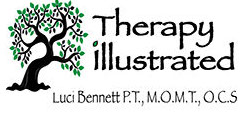
Soft Tissue Injuries:
Sprains and Strains
Both of these terms describe a tearing of collagen. The difference is a sprain is a tear of ligament and a strain is a tear in the muscle/tendon.
Ligament
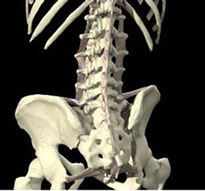
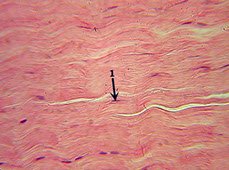
Muscle / Tendon
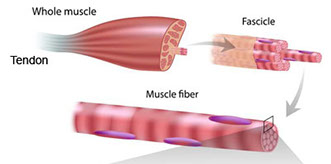
The collagen cell itself looks like thread. It is woven together with other collagen threads to create a tissue like fabric. Collagen and other cells are combined to make ligaments and muscle tendons.
Ligaments are the gristly tissue that holds bones together.
Muscles have tendons that connect them to the bone.
Collagen
Ligaments hold bones together and maintain a relationship of joint stability. When a ligament is torn or overstretched, the joint restraints to movement are changed and become hypermobile. Long term complications of hypermobility are excessive friction and deterioration of cartilage resulting in arthritis.
All muscles turn into a tendon in order to attach to the bone. When the muscles/tendons are damaged, then the muscle can't do its job of moving the bones and controlling the joint. Then this tissue tends to become restricted resulting in higher levels of compression and stiffness.
Acute sprains and strains are usually the result of a trauma such as a fall or car accident.
Chronic stress and compensation leads to cumulative trauma of the muscle/tendon and ligaments that can result in a fraying of the ligament and tendon which initiates the inflammatory response.
When muscle/tendons and ligaments are damaged, the spinal column is weakened. It becomes painful with holding postures for long periods of time or with certain directions of movement.
All injuries have phases of recovery.
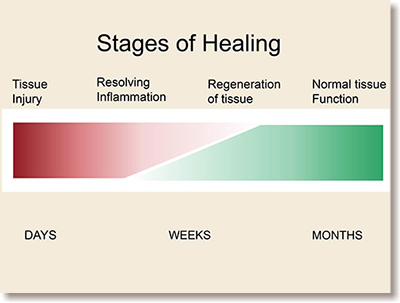
There are many factors that determine how long it takes to recover from a sprain or a strain. The severity of the injury, how well the injured area is cared for, and the health and healing capacity of the injured person all influence how long it takes for the body to regenerate.
The contents of BackPainExplained web site including the text, graphics, images, and other material are for informational purposes only. The content of this web site is not intended to be a substitute for professional medical advice, diagnosis, or treatment. Always seek advice of your physician or other qualified health professional with questions you may have regarding a medical condition. Do not delay seeking medical advice or disregard professional treatment advice because of something that you have read on BackPainExplained.
Call your physician or 911 if you think that you have a medical emergency. Reliance on any information within BackPainExplained web site is solely at your own risk.